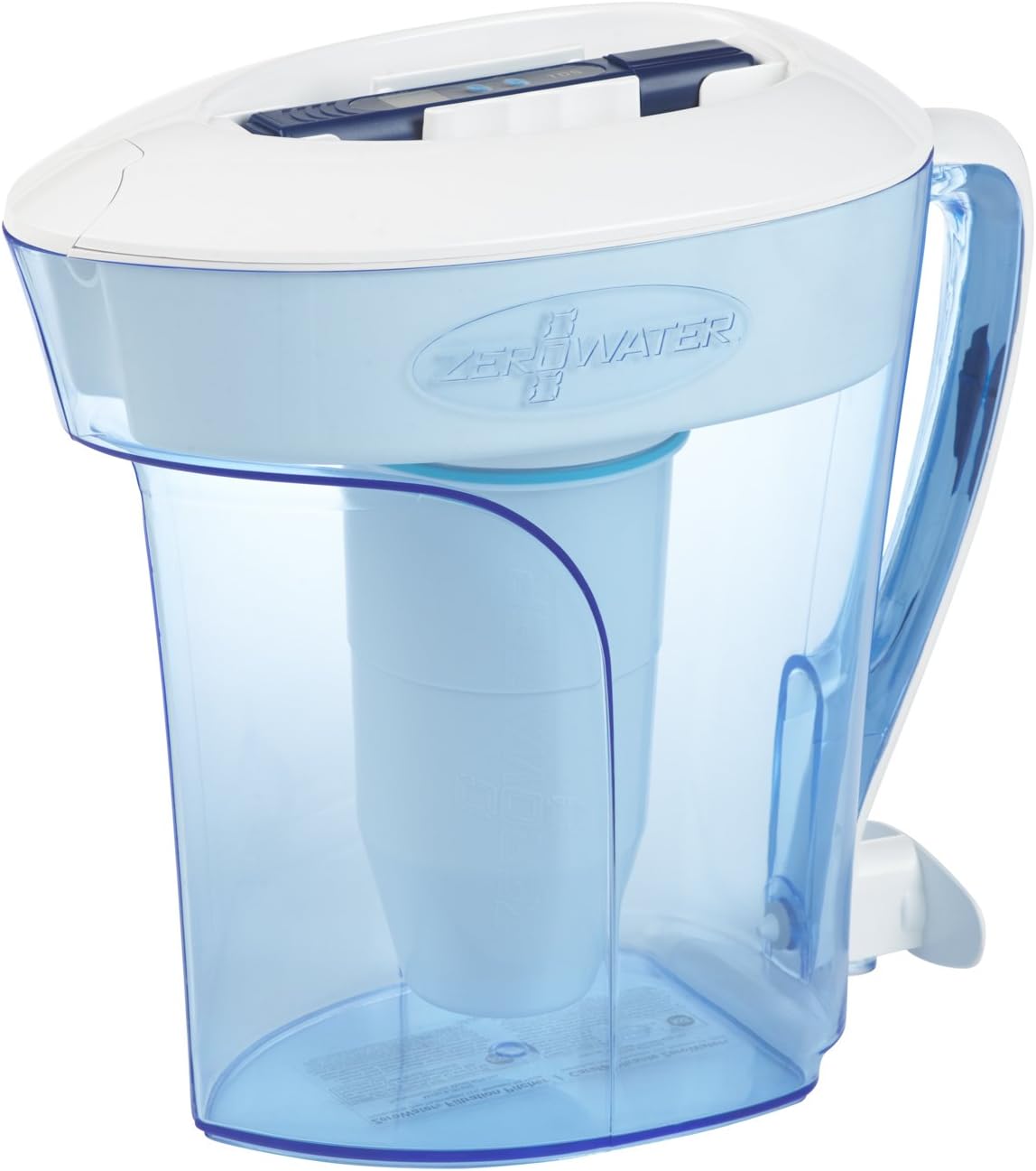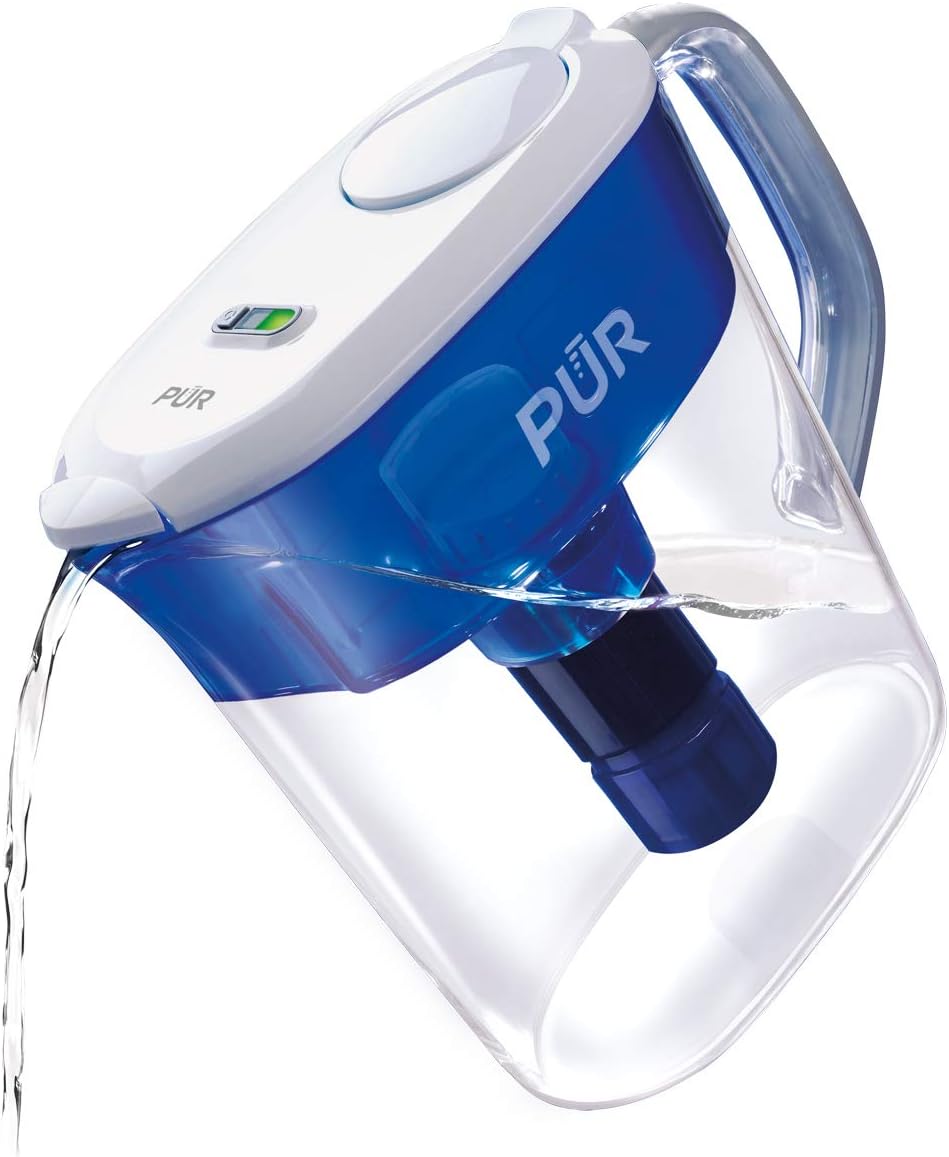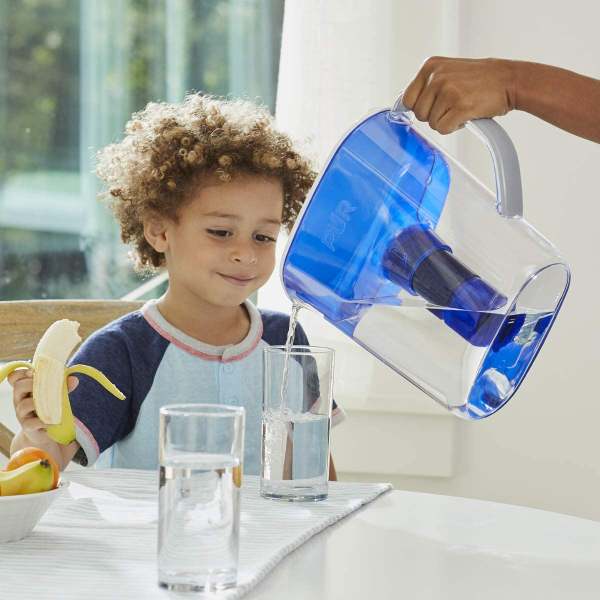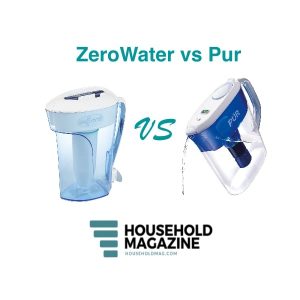Who is ZeroWater and Pur?
ZeroWater is a renowned producer of water filter products. They manufacture pitchers, dispensers, replacement filters, eco filters, and TDS meters.
Their water pitcher capacity ranges from 6 to 40 cups. They filter anything from heavy metals to organic materials.
And thanks to the integrated TDS meter, you can easily tell the quality of the water right from the word go.
The integrated 5-stage filtration system also makes the ZeroWater filter pitchers a favorite for many.
On the other hand, Pur Company deals with the production of filters, dispensers, and pitchers. They have been in business for more than 30 years and continue to offer their customers modern water filtration products.
Their water filter pitchers come with an activated carbon fiber that removes organic materials.
ZeroWater and Pur filter pitchers are a favorite for many households, thanks to their affordable pricing, exceptional filter process, and longevity.
In this article, we compare the ZeroWater 10 cup water filter and the Pur 11 cup water filter.
ZeroWater vs Pur Pitcher Comparison
| Image | PRODUCT/ Features | Rating | |
|---|---|---|---|
Winner |
ZeroWater PitcherFilter Quality: Filter Quality Removes herbicides, chlorine, zinc, taste, odor, lead, chromium, organic particles, particles, silver, thallium, selenium, copper, manganese, asbestos, cyanide Lifespan: 40 gallons or approximately 2 months Annual Replacement Cost: $89.99 for 8 pack Capacity: 10 cups Warranty: 90 days Special Features: LED filter indicator |
|
|
 |
PUR PitcherFilter Quality: Removes lead, chlorine, microbial cysts, mercury, taste, odor Lifespan: 40 gallons or approximately 2 months Annual Replacement Cost: $49.98 Capacity: 10 cups Warranty: 90 days Special Features: TDS Meter |
|
Filter Quality
Both brands are NSF and WQA certified, meaning they can remove 99% of lead and chromium from your tap water.
The ZeroWater filter pitcher comes with a five-stage filtration system that is better than the three-stage filtration system of the Pur filter pitcher.
In the first and second stage, water sediments and other solids are removed as the water flows through a tight mesh and foam.
The mesh will remove large solids, while the foam will remove the smaller ones.
The third stage consists of an activated carbon fiber that filters out contaminants such as Chlorine, pesticides, and herbicides.
It also improves the water taste and retains the essential minerals.
In the fourth stage, the integrated iron arrays ensure that the water retains its natural taste as the positive and negative ions filter out foreign bodies.
Finally, the fifth stage removes the finest solid particles ensuring the water is crystal-clear and free from illness-causing organisms.
The ZeroWater filter pitcher is also equipped with a total dissolved solids (TDS) meter technology that allows you to test the quality of the water.
The technology does not measure chemicals and heavy metals such as lead rather, it measures the amount of total dissolved solids in the water. These are inorganic and organic compounds.
While the Pur water filter pitcher consists of a tight mesh, activated carbon fiber, and ion-exchange filter made of coconut shells, it lacks the non-woven membrane layer that is present in the ZeroWater filter.
Both water filter pitchers will arguably afford you clean and softer drinking water. Still, the ZeroWater outshines Pur since it can remove ultra-fine contaminants through the non-woven membrane layer.
Designs and Models
Well, both water filter pitcher brands come in ergonomic designs making handling a hassle-free task. The handles are placed close to your body so you can have a firm grip.
Another similarity is that they are made of transparent bluish plastic. Not only does it look good but it also allows you to see the water level so you can know when to refill.
When it comes to refilling, you don’t have to remove the lid in both since they have a fill lid that automatically opens and closes after you are done refilling.
This means that no contaminants will enter the tank. The same case applies to the pour spout, it automatically closes once you finish pouring water into a glass.
Another awesome feature that this water filter pitcher rocks is a pour spout at the bottom. You can easily pour water into a glass without lifting it, making it convenient for kids and the elderly.
On the other hand, Pur comes with a filter change light that shows you the health of the filter. When the LED flashes green, it is in good health.
Yellow indicates that the filter is on the verge of expiring while red indicates you should replace the filter immediately.
When it comes to portability, ZeroWater is more portable since it weighs 1 pound compared to Pur that weighs 2.25 pounds.
Unfortunately, in our Pur water pitcher review, we saw that customers complain about its poor quality. The plastic breaks under the impact of light drops and impacts.
If you are more conscious about the quality of a water filter, we wouldn’t recommend the Pur water filter.
Overall, ZeroWater filter takes the day thanks to its lightweight design and a bottom pour spout.

Flow rate/Capacity
Pur and ZeroWater filters are marked as “filter as you pour” with ZeroWater featuring the conventional reservoir you fill with tap water.
The water flows through the five stages before pouring into the tank as we saw in the ZeroWater filter pitcher review. The best part, it has a barrier that prevents the unfiltered water from flowing into the tank.
As such, you can always have a glass of water as the filter pitchers the tap water.
Its flow rate is capped at 6.5 oz per minute. From our test, ZeroWater took at least 11 minutes to filter the water.
This is due to the long filtration process. Nonetheless, you get cleaner and softer water.
The Pur filter pitcher is not clear on its flow rate but it filters water faster than the ZeroWater. This is expected since it is equipped with a three-stage filtration system.
Unlike ZeroWater, Pur filters the water as you pour in since it lacks a reservoir. While this improves the filtration speed, the process is not as rigorous as that of the ZeroWater.
This means that some contaminants might be present in your already filtered water.
With it, you can expect to get clean water within 9-10 minutes.
While ZeroWater offers better performance when it comes to filtration, it is not the best if you are looking for fast filtration. As such, Pur wins.
Certification
Both brands are National Science Federation (NSF) and Water Quality Association (WQA) certified meaning that they remove almost all contaminants in water.
This means that the companies are keen when it comes to offering you safe water filtration products. As it stands, it is not an easy task to get a certification from such bodies.
As mentioned above, these certifications assure you that both filters can remove lead, chromium, and other carcinogenic products.
As such, it is a tie in this section.
Filter Lifespan & Annual Maintenance Cost
ZeroWater and Pur water filter pitchers have a lifespan of 40 gallons of water. This means you’ll have to replace them every two months, depending on your water needs.
This is inconvenient, especially if you have a large family or group. However, this seems to be the case in most pitchers, as we saw in the Pur vs Brita review, where Brita also has a lifespan of 40 gallons
When it comes to annual maintenance costs, the ZeroWater filter offers you several choices depending on your budget.
If you decide to buy a 2 -pack replacement filter package, your annual maintenance cost will be $59.98 since each package will cost you $29.99.
Remember you’ll have to replace the filter after every two months.
If you go for the 4-pack, you’ll shell out $49.99 per year. The 16 pack will have you pay $149.99 for the first year. The rest, you can use them in the second and third year.
The 8-pack package that goes for $89.99 will serve you for the first year and the next four months.
As you can see, the 16-pack is the most cost-effective since you won’t need to buy replacement filters for the next 2-3 years.
Pur, on the other hand, has two types of pitcher replacement filters:
- Replacement pitcher with lead reduction
- Faster Pitcher Replacement Water Filter
The former comes in a pack of three costing you $24.99 every three months or $49.98 per year.
You can buy the latter as a piece at $6.99, meaning you’ll shell out $41.94 each year. Alternatively, you can choose the 3-pack that goes for $16.99, amounting to $33.98 per year.
While the annual maintenance cost of the ZeroWater comes in different packages, it is more expensive compared to Pur. As such, the winner is Pur.

Warranty
The ZeroWater and Pur filter have a warranty of 90 days which is shorter compared to other pitchers in the market.
Having said that, the warranty only covers manufacturing defects and not damage from accidental drops.
So, if you notice any defects with the 90 days, be sure to contact ZeroWater for a refund or replacement.
Standout Features
There’s no denying that each filter pitcher comes with its unique features. Let’s look at them.
- TDS meter: ZeroWater comes with a TDS meter that indicates whether the filtered water still contains contaminants. This feature is lacking in the Pur filter.
- LED indicator: Pur comes with an LED indicator that shows the health of the filter so you can know when to change it.
- 5-stage filtration system: ZeroWater comes with a 5-stage filter system ensuring your water is crystal-clear and ultra-safe for drinking.
- Bottom spout: ZeroWater also comes with a bottom spout that pours water once pressed. You don’t need to lift the pitcher.
ZeroWater Vs Pur: Which Filter Pitcher Is Better?
Well, from the review, you can tell that both pitcher brands offer exceptional water filtration results. Both are NSF-certified, come with ergonomic handles, and will improve the look of your fridge.
That said, each is ideal for a different group of users.
So, which one should you use? Let’s find out.
+ You don’t mind waiting for long before filtration completes. As mentioned, it takes up to 11 minutes to filter water in the reservoir.
+ You don’t want to strain your hand when pouring water into a glass.
+ You want a lightweight water pitcher that you can carry around your house or office.
+ You want a wide array of filter replacement options.
+ You want to drink more cups or if you have a large group in your office.
+ You want to always know the state of the filter.
+ You want average water filtration.

